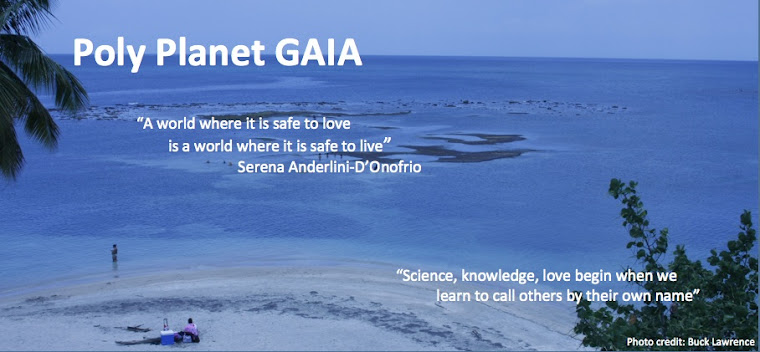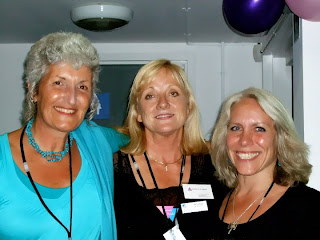Bi ReConNaissance: Introduction to BiReCon
Serena Anderlini-D'Onofrio
Conclusion
Last August at UEL a sense of hope and joy of coming together emanated from the mere simultaneous presence of so many bis with different interests, backgrounds and motivations for participating. When BiCon 28, 10 ICB, and BiReCon converged, BiTopia came alive. The sober walls of academe were made more spirited and effervescent by the concrete presence of such an imaginative congregation of folks from many countries, genders, queer subcultures, age groups, venues, and walks in life.
The 26th was research day and at BiReCon one would find work that breaks new ground. The research presented was informed and reliable yet wide-ranging enough to trade in paradigmatic issues. It was free of media friendly sensationalism and ivory tower abstractions. The very concept of bisexuality, with its multiple meanings and implications, offers a prism through which the semiotics that organize cultural constructions of love can be sorted out. The contents of that day have been elaborated into articles and organized in five clusters. We are grateful to the authors who submitted to us and revised. We hope to have orchestrated a volume that honors BiReCon’s momentous quality.
In subsequent days, one would get a sense of the lore of bisexuality, how bi people like to dress, how they relate, what they talk about, the urban legends they trade. Imaginativeness, creativity, playfulness, a certain taste for the odd, the eccentric, an inclination for the carnivalesque, the topsy-turvy, for the giggly excess, the performative, the subversive. Different age groups met, who have experienced biphobia at different times and in different contexts, yet with the same sense that integration of perceived opposites is what dissipates the fears. The festive atmosphere was traversed with a vibration that energized the intention to respond to the challenges that make bisexuality necessary as a transformative force for the new millennium.
Cabo Rojo, Puerto Rico, February 20th, 2011
Works Cited and Consulted
Anderlini-D’Onofrio, Serena. Gaia and the New Politics of Love: Notes for a Poly Planet. Berkeley: North Atlantic Books, 2009.
Anderlini-D’Onofrio, Serena, ed. Plural Loves: Designs for Bi and Poly Living. New York: Routledge, 2005.
Cantarella, Eva. Bisexuality in the Ancient World. Yale University Press, 1992. (Original title: Secondo natura, “according to nature”.)
Chedgzoy, Kate. “Two Loves I Have: Shakespeare and Bisexuality.” In Bi Academic Intervention Eds, The Bisexual Imaginary: Representation, Identity and Desire. London: Cassell, 1997.
Garber, Marjorie. Bisexuality and the Eroticism of Everyday Life. New York: Routledge, 2000.
Margulis, Lynn and Dorion Sagan. Microcosmos: Four Billion Years of Microbial Evolution. University of California Press, 1997.
______ . Mystery Dance: On the Evolution of Human Sexuality. New York: Simon and Schuster, 1991.
Marshall, Nowell. “Refusing Butler’s Binary: Bisexuality and Performative Melancolia in Mrs. Dalloway.” In Serena Anderlini-D’Onofrio and Jonathan Alexander Eds, Bisexuality and Queer Theory. New York: Routledge, 2010.
Storr, Merl. Bisexuality: A Critical Reader. London: Routledge, 1999.
Wikipedia: Docklands: http://en.wikipedia.org/wiki/London_Docklands
Thanks for reading us. We hope you have enjoyed. Please leave a comment. More exciting posts to follow on diverse topics in the near future!
Copyright and Prepublication Notice:
© Serena Anderlini-D'Onofrio, transferred to Taylor & Francis for upcoming publication in BiReCon, a selected proceedings issue of the Journal of Bisexuality. Prepublished here courtesy of T & F. Stay tuned for volume and buy it online!
Read the Journal of Bisexuality online, the only peer-reviewed journal dedicated to the study of all aspects on bisexuality. Check out our latest: a provocative special-topics issue on Bisexuality and Queer Theory!









